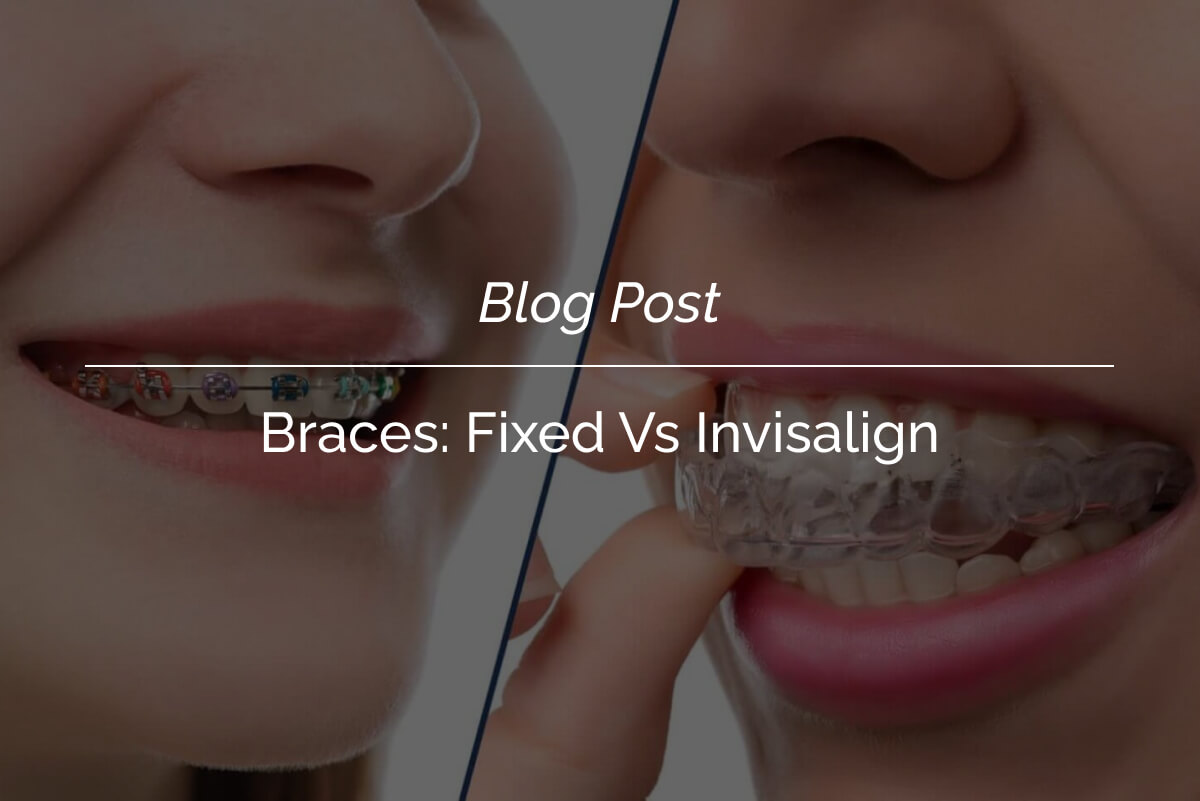Are you looking to realign your teeth and create a straight, beautiful smile? Braces may be the answer for you. Depending on your budget and dental health situation there are at least two types of braces you can get: Invisalign and Fixed braces. When thinking about which type of braces you may want, it is important to consider the costs, the actual procedure and your personal preference. In the end, one option may be better suited than another.
Occasionally, when you lose your milk teeth as a child and your permanent, “adult” teeth come through, they might not grow at the right angle or they may even grow with big gaps between them. Eventually this could lead to having lots of crooked teeth and a gappy smile. Fixed braces and Invisalign can help with that.
There are many types of braces now as teeth straightening options have expanded and fixed braces are no longer the only solution. Some braces include Metal, Ceramic or Invisalign.
If you’re thinking of getting Metal braces, then you will be looking at the conventional type with elastics and brackets. The whole process for applying Full Fixed braces may only take between 30 and 90 minutes. It involves polishing and preparing teeth before applying a glue for the brackets. Occasionally, you may feel tender after your braces have been tightened but normal painkillers can help with this. You will have to brush your teeth more often and with greater care than normal. Maintaining a good diet will help keep your teeth healthy and strong.
Invisalign – on the other hand – involves modern technology and combines it with the some of the most advanced digital orthodontic treatments. It allows your teeth to move gradually and in a predictable way. You will need less visits to a clinic than with fixed braces and as they are removable, you can continue to enjoy your favourite foods while remaining more comfortable every day. Some clients may have concerns about maintaining good oral health with braces. Invisalign allows you to brush and floss your teeth as usual and as the aligners are removable, you can clean them to assist in keeping a high standard of dental hygiene. For Invisalign, you will have an initial consultation with your dentist and this is your chance to discuss whether invisble aligners are right option for you. Your doctor will then map out your orthodontic treatment plan. They do this by either taking physical impressions of your teeth or using an advanced 3D digital image scanner. As your dentist maps out your treatment plan, they will be reviewing the exact movements and even the duration of your treatment. Using Invisalign is a gradual process and you may have to change your aligners every week to maintain the gentle shift of your teeth. Your checkups can be scheduled every 6 to 8 weeks, depending on your situation.
It is important to consider the differences in cost, pain, preference and look when deciding on which braces treatment you will choose. Call Manningham Dentist today for more information.
